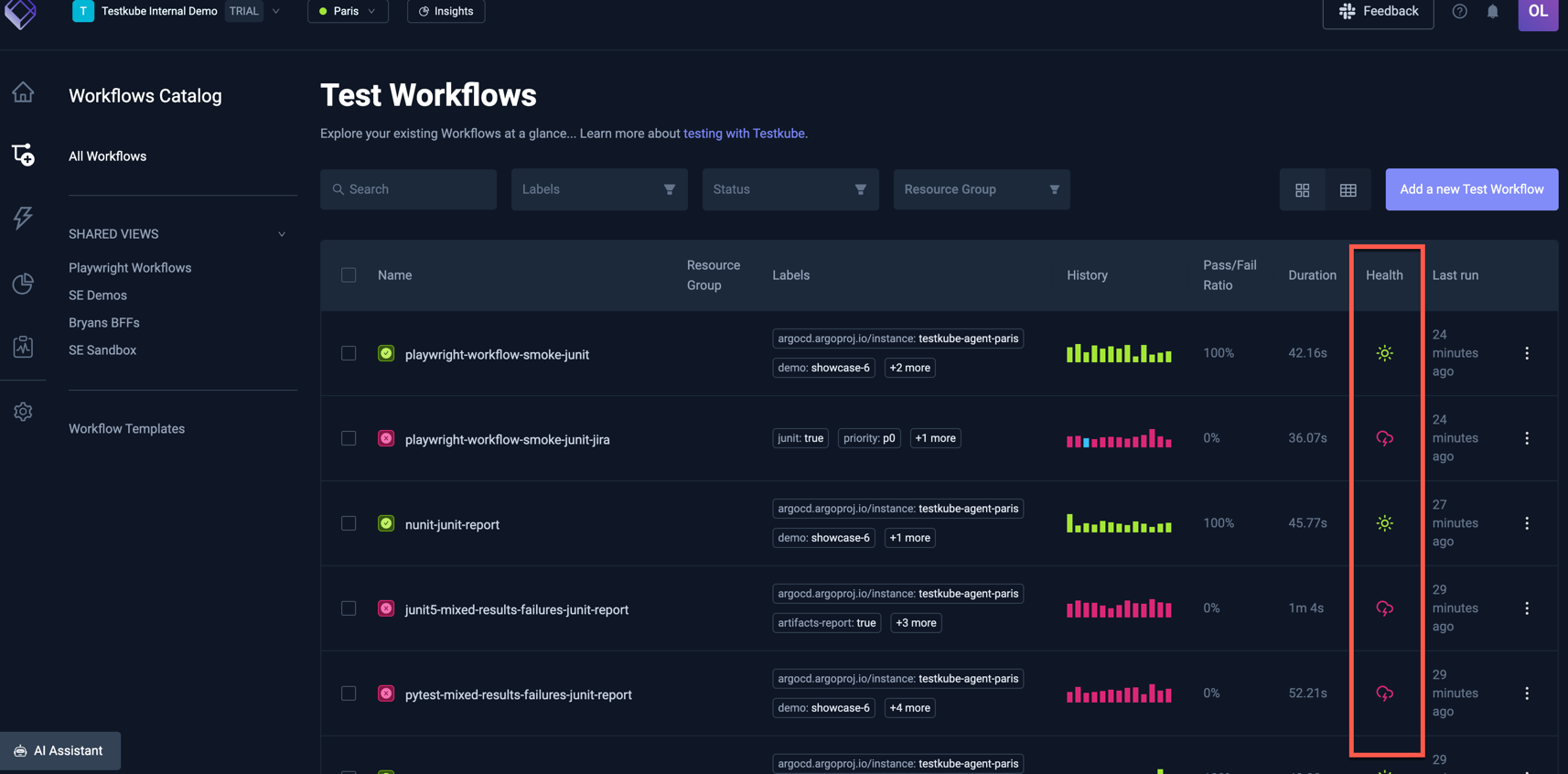Workflow Health & Flakiness
Testkube introduces Workflow Health as a core metric to help you evaluate the reliability and stability of your Test Workflows over time. This metric incorporates not only how often your workflows pass or fail, but also how consistent their outcomes are—an essential signal for identifying flaky workflows and improving test reliability at scale.
What is Workflow Flakiness?
Workflow flakiness refers to non-deterministic or inconsistent test results—tests that sometimes pass and sometimes fail without changes to the underlying system. Flaky workflows can lead to:
- False negatives that block deployments
- Wasted debugging time
- Reduced developer confidence in test outcomes
Testkube tracks flakiness at the Workflow-level to provide a broader view of system reliability. Test-level flakiness will be introduced in a future release.
What is Workflow Health?
Workflow Health is a score that quantifies the reliability of a given Test Workflow, taking into account both its pass rate and its flakiness. The higher the score, the more consistently reliable the workflow is.
Formula:
Workflow Health = PASS_RATE × (1 - FLIP_RATE)
Where:
- PASS_RATE is the ratio of successful workflow executions over the last 10 runs.
- FLIP_RATE is the ratio of consecutive status changes (pass → fail or fail → pass) to total transitions, indicating instability.
Based on the health score, the workflows will have either a sunny (100%), cloudy (30-99%), or stormy (0-29%) status.
Example
If a test workflow passed 8 out of its last 10 runs (80% pass rate) and flipped status 4 times (i.e., pass → fail or fail → pass), then:
PASS_RATE = 8 / 10 = 0.8FLIP_RATE = 4 / 9 = 0.444Workflow Health = 0.8 × (1 - 0.444) ≈ 0.444
This means the workflow appears healthy at first glance (80% pass rate), but its frequent status changes reduce confidence in its stability.
- sunny (100%)

- cloudy (70%)

- stormy (0%)

In the Dashboard
Workflow Health is shown in the Testkube Dashboard wherever you can see the status of your Workflow(s), for example

Why It Matters
By incorporating both test outcome and flakiness, Workflow Health helps you:
- Identify unreliable workflows even when pass rates are high
- Prioritize test stabilization efforts in CI/CD pipelines
- Track quality regressions after new changes are introduced
- Drive accountability for test reliability across teams